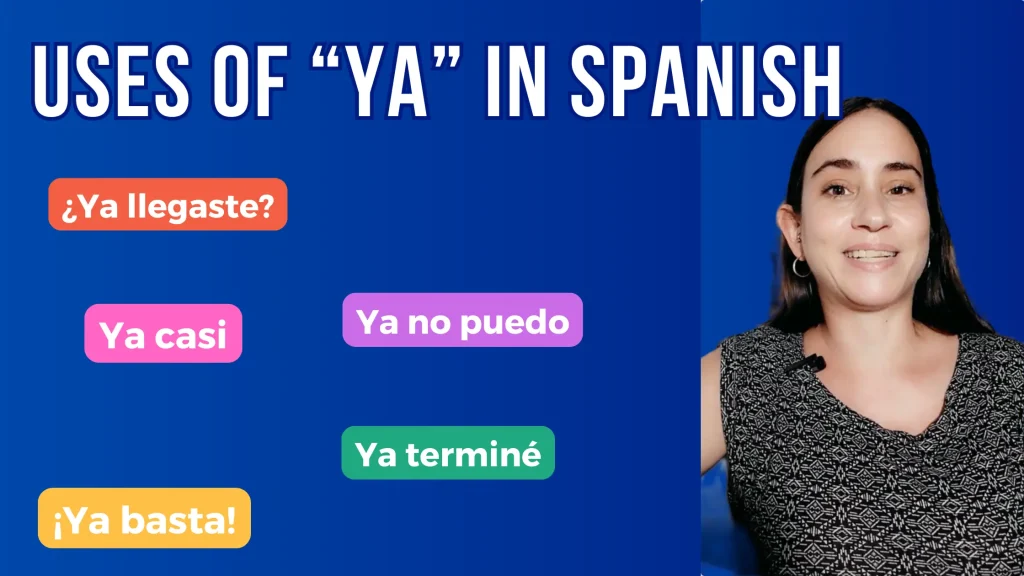Subscribe to our YouTube Channel to see all of our lessons and get the latest videos right away!
What are direct object pronouns in Spanish? Los complementos directos o los objetos directos often the answer to the “What” of the verb and receive the first action of the verb.
Los Objetos Directos son palabras o frases que complementan a los verbos transitivos, lo que significa que ellos reciben la acción de los verbos de acción. El objeto directo puede ser hallado al preguntar el ¿Qué? del verbo.
If you’re asking, what in the world? Watch the Direct Object Pronoun lesson below to get your questions answered.
In this free Spanish lesson you will learn:
- Direct objects and how to find them in Spanish sentences / Objeto directo y cómo encontrarlo en oraciones en español
- Direct object pronouns / Los pronombres de objeto directo
Direct Objects and how to find them – El Objeto Directo y cómo encontrarlo
You might be asking, “What is a direct object? What are you talking about? Here are some examples to get us started. Algunos ejemplos para empezar:
- The cat chased the mouse.
- What did the cat chase? The mouse. Mouse is the direct object.
- ¿Tiene los cuadernos para la escuela?
- What do you have for school? The notebooks. Notebooks are the direct object.
The direct object can be found the same way in Spanish by asking ¿qué? of the verb / El objeto directo puede ser encontrado de la misma manera en español al preguntar ¿qué? del verbo
- El gato persiguió al ratón. (The cat chased the mouse)
- ¿Qué persiguió el gato? El ratón. Ratón es el objeto directo.
- What did the cat chase? The mouse. Mouse is the direct object.
Direct object pronouns – Los pronombres de objeto directo
The direct object pronoun replaces the direct object. As we speak, we do this all the time to simplify communication. Take for example this conversation between Charlie and his Dad about pizza (pizza = direct object).

Dad: Hey Charlie, did you eat the pizza?
Charlie: No, I didn’t eat it?
Dad: Well then, who ate it?
Charlie: I think Sam did.
Dad: He said, he did not eat it.
Charlie: Lucy must have eaten it then.
Dad: Oh, ok.
El papá: Oye Carlitos, ¿comiste la pizza?
Carlitos: No, no la comí.
El papá: Pues, ¿quién la comió?
Carlitos: Creo que Sam la comió.
El papá: Él me dijo que no la comió.
Carlitos: Entonces, Lucy la comió.
In this example, pizza is the direct object because it is the answer to the question; “What was eaten?” You will notice the speakers quickly replace “pizza” with the direct object pronoun “it.” Imagine if the direct object pizza was not replaced by “it” and was repeated throughout the conversation!
The various object pronouns used to replace the direct object are as follows.
El pronombre de objeto directo reemplaza al objeto directo. Las formas pueden verse a continuación
Singular |
Plural |
||
| me | me | nos | us |
| te | you | os | you |
| lo | him, you, it | los | you, them (masc.) |
| la | her, you, it | las | you, them (fem.) |
La ubicación del objeto directo: Where do you put the object pronoun?
When you have a conjugated verb, these pronouns are generally placed before the verb / Estos pronombres están ubicados generalmente antes del verbo.
- ¿Quien la comió?
- Ella no me llamó.
– Pronouns must agree in gender and number with the noun they replace. / Los pronombres deben coincidir en género y número con el sustantivo que reemplazan.
- Quiero el gato gris. (I want the grey cat)
- Lo quiero. (I want it)
- El niño comió los dulces. (The boy ate the sweets)
- El niño los comió. (The boy ate them)
- Pedí la ensalada. (I ordered the salad)
- La pedí. (I ordered it)
- Los estudiantes borran las pizarras. (Students erase the whiteboards)
- Los estudiantes las borran. (Students erase them)
If there is an infinitive verb (unconjugated) the direct object pronoun can either be placed before the conjugated verb or attached to the infinitive. / Si se usa un verbo en infinitivo en la construcción de la oración, el pronombre de objeto directo puede colocarse antes del verbo conjugado o adjunto al verbo infinitivo.
- Tienes que buscar a tu hermana.
- You have to look for your sister.
- La tienes que buscar.
- You have to look for her.
- Tienes que buscarla.
- You have to look for her.
If you are using an object pronoun with a command, there are some rules to follow 🙂 / Los verbos en forma de mandato tienen ubicaciones especiales para los pronombres
– Affirmative commands attach the pronoun to the end of the verb, adding an accent mark to the stressed verb / Los mandatos afirmativos adjuntan el pronombre al final del verbo, agregando un acento al verbo.
- Tómalo.
- Take it.
- Llámame.
- Call me.
– Negative commands require that the pronoun come before the verb / Los mandatos negativos requieren que el pronombre esté antes del verbo.
- ¡No lo toques!
- Don’t touch it!
- No me molestes.
- Don’t bother me.
¡Te toca a ti! Your turn…in the comment section below- try writing a sentence using the direct object pronoun.
Oh, and you should know…there are also Indirect object pronouns! Hay complemento indirectos también.
This is for another lesson but just to give you a heads up. Indirect Ojbect Pronouns…
- Receive the 2nd action of the verb
- They usually tell us where or to whom the direct object is going
- They answer the question, “to whom?” or “for whom?”
Here are some examples:
- He gave me the book. Él me dió el libro.
- What did he give? the book = the direct object
- To whom did he give it? to me = the indirect object





